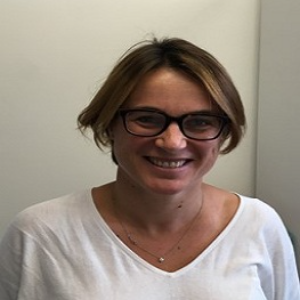Title : Ru/TiO2 CO2 methanation catalysts: The decisive role of support crystallinity and stability
Abstract:
Effective catalysts that could assess multiple environmental issues are nowadays needed, in a context of growing societal awareness and newly appeared environmental legislations. Challenges for these catalysts are numerous: Their production has to be as green as possible, fast and easy to handle; their use conditions have to be mild without compromising the requirements for high selectivity and high activity; they have to be nearly indefinitely reusable. These drastic requisites have oriented research toward soft preparation methods leading to nanostructured heterogeneous catalysts in which very active species are designed at the nanoscale.
Our work aims at developing innovative nanostructured ruthenium based catalysts with, as chosen fields of investigation, the methanation of CO2 . Ru/TiO2 catalyst is widely recognized as one of the most attractive formulation, allowing to obtain ~100% selectivity to methane when operating under mild reaction conditions (e.g. at atmospheric pressure and ~200 °C or lower).
Pre-synthesized, monodispersed 2 nm-RuO2 nanoparticles were used to serve as precursors, deposited on TiO2 supports annealed in air and then reduced with hydrogen. Such catalysts demonstrated superior catalytic performance in CO2 methanation to that prepared by Incipient Impregnation (IM) method.
Pure TiO2 supports with different crystallinity (anatase and rutile) were either prepared in the laboratory (calibrated, specific shape nanoparticles) or obtained from commercial providers (more dispersed in size, ill-defined), mixed, and used as supports in different ratios.
Our studies show the presence of a clear structure-process-performance relationship: the crystal structure of TiO2 support, as well as its ability to sinter dictate the morphology and dispersion of Ru species, thereby the catalytic performance in CO2 methanation. Indeed, this is the strong interaction between the RuO2 nanoparticles and rutile TiO2 phase that stabilize the system through epitaxial lattice matching during annealing step. Moreover, supported RuO2 nanoparticles have clearly showed the ability to migrate (from anatase to rutile) over the support surface upon thermic treatment. This migration phenomena is thoughtfully documented with in situ TEM.
This epitaxially-driven migration provokes decisive modifications in the catalyst and can be further exploited to tune the catalyst active phase morphology, localization and thus activity.
Audience Take Away:
- Catalysts prepared from pre-synthesized, monodispersed 2 nm-RuO2 nanoparticles are more efficient than using the IM method.
- In supported catalysis, although the primary role of the support is often thought to be limited to physical dispersant for intact metal active nanoparticles, it is now recognized that the metal-support interactions clearly influence the catalytic activities and/or selectivity.
- State of the art in situ TEM to understand the RuO2 migration process.
- The understanding of the stabilization and migration process allows to further tune more efficient catalysts.



